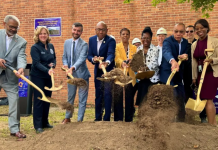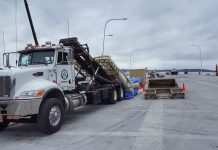Since 1991, Enviro-Disposal Group’s president Rich Rivkin has managed more than 3,000 projects involving transportation and disposal of RCRA (Resource Conservation and Recovery Act) hazardous and non-hazardous contaminated soils, dredged sediments and other environmentally regulated materials. Located in Northport, NY, the company’s work has spanned 37 states.
The company’s listed specialties include removal of contaminated soils, historic/urban fill, masonry, drummed wastes, sediment, sludge, liquids and construction and demolition (C&D) debris.
Rivkin says the recent uptick in construction activity in the metro New York/New Jersey region has sparked a growing interest from contractors and consultants seeking to deepen their understanding of contaminated soil waste classifications, and how this knowledge can affect a project’s bottom line.
“In this part of the country, any time you put a shovel in the ground there’s a pretty good chance that you may encounter historic fill soils that contain semi-volatile compounds or metals that exceed regulatory limits, thereby triggering the requirement for compliant offsite disposal.”
He says that at any given job site, the greater the volume of contaminated soil, the higher the likelihood that more than one category of soil classification may be identified. This often drives the need to target multiple disposal facility options in order to realize the lowest possible costs for transportation and disposal (T&D).
“Non-hazardous soil disposal options currently include, reuse as New Jersey Residential, reuse as New Jersey Non-Residential, reuse as New York Part 375, reuse as Pennsylvania Clean Fill, reuse as Pennsylvania Regulated Fill, reuse as landfill cover, recycling as ID-27, and Sub-title D landfill disposal.”
Hazardous soil disposal options are more limited and include, RCRA/TSCA (Toxic Substances Control Act) treatment, landfill disposal, and incineration.
Rivkin says there is a science to determining soil waste classification and subsequent targeting of best-case disposal options. “This process is based upon evaluating a set of project-specific factors that include: Site location, contaminants detected, contaminant concentrations, volume, geotechnical characteristics, site history, debris, gradation size, odor, moisture content, and so on.”
“Navigating the maze of disposal facility options requires expertise in interpreting analytical data, as well as a comprehensive understanding of the varying acceptance criteria that apply at each of the respective 30 regional disposal facilities.”
When it comes to managing contaminated soil disposal, he says that the dual mission on every project is to ensure regulatory compliance, along with achieving cost minimization.
For every project, there exists a singular best-available solution that is readily identifiable, Rivkin says.
For more information, visit http://enviro-disposal.com.










